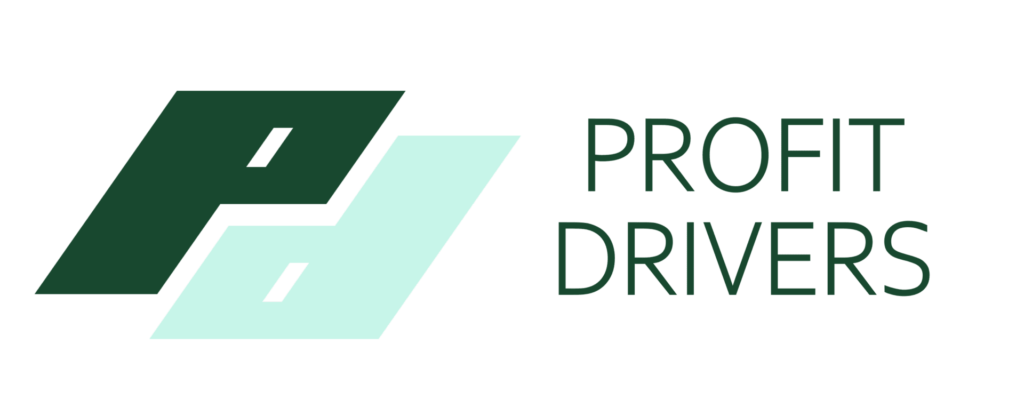Building a Pricing Strategy That Lasts: A 7-Step Guide to Unlocking Sustainable, Long-Term Growth and Profitability
Developing an effective pricing strategy isn’t a simple task—it’s more like assembling a puzzle where the pieces keep changing. Every decision, from customer segmentation to market positioning, must fit together seamlessly while adapting to an ever-evolving landscape of competition and demand.
Yet, many businesses find themselves stuck at the starting line, overwhelmed by the challenge of defining a clear pricing strategy. Without a strong foundation, even the most well-intentioned pricing efforts can crumble under the weight of inconsistent practices, missed opportunities, or outdated assumptions.
The key to success lies in creating a framework that not only addresses your current pricing gaps but also evolves to meet future needs. When approached strategically, pricing becomes more than just a financial tool—it becomes a driver of growth, profitability, and competitive advantage.
At Profit Drivers, we’ve spent decades helping countless organizations build pricing strategies that are clear, actionable, and designed to last.
In this guide, we’ll walk you through the seven essential steps to assess your current practices, refine your approach, and lay the groundwork for a strategy that delivers lasting results.
What Makes a Pricing Strategy Valuable & Effective?
Pricing is more than just a financial task—it’s a strategic cornerstone that drives growth and profitability. Building a strong pricing foundation involves more than setting prices; it’s about developing a clear, well-informed strategy that uncovers profit opportunities, minimizes leakage, and adapts dynamically to market changes.
Did you know? A 1% price increase can boost operating margins by up to 11%, and focusing on pricing fundamentals like waterfalls can drive profit margins up to 12%. With Profit Drivers’ expertise, organizations can streamline workflows, fix inconsistencies, and refine segmentation—turning pricing into a strategic growth driver.
Establishing a foundational pricing strategy doesn’t just improve processes—it empowers teams to shift their focus from manual, time-consuming tasks to strategic, high-value initiatives. Imagine the possibilities when your team is no longer stuck in reactive mode but actively driving measurable results through a clearly defined and executed pricing strategy.
Step 1: Assess Your Current Pricing Behavior
Building a pricing strategy starts with understanding where you stand today. Think of it like diagnosing a strange noise in your car—until you pinpoint the issue, you’re just guessing. Assessing your current pricing behavior provides the clarity needed to move forward with purpose.
Many organizations struggle with chaotic pricing practices that lack structure or strategy. Often, they don’t fully understand the effectiveness of their current approach. Without clarity on past or present pricing decisions, it’s impossible to identify whether those strategies are working or where they’re falling short.
One organization’s scatterplot of customer pricing resembled a cloud of confetti—prices were scattered inconsistently, with no clear relationship between customer size, revenue potential, or pricing logic.
This led to:
- Inconsistent margins
- Customer dissatisfaction
- Missed opportunities for profitability
By using a pricing waterfall to map how prices flowed from list price to pocket margin, the company uncovered critical gaps such as:
- Discount leakage
- Misaligned customer segments
- Inefficient approval processes
This kind of assessment isn’t just about fixing what’s broken; it’s about creating clarity. Even if your data isn’t perfect, patterns in pricing dispersion, margin trends, or discount behavior can reveal critical insights and provide a roadmap for improvement.
Quick Tip: Start by asking: “How am I doing now?” and “What am I doing now, and is it effective?”
Step 2: Match Features to Your Pricing Maturity
Think of pricing maturity like your cooking skills—are you following a trusted recipe or just tossing ingredients into a pot and hoping for the best?
To evaluate your maturity, focus on:
- Processes: Are decisions guided by a clear framework or made on the fly?
- Data Consistency: Are similar customers receiving vastly different prices?
- Strategic Clarity: Can your team describe your pricing strategy in one sentence?
A long-standing market leader once relied on tradition and gut instinct. Without a structured process, sales often drove decisions that led to profit leakage and internal confusion. After analyzing their pricing waterfall and segmenting customers by value, they:
- Reduced unnecessary discounting
- Aligned departments on a shared strategy
- Built a scalable foundation for future growth
Your strategy should align with your current maturity—not every business is ready for advanced tools, and that’s okay. The best strategies evolve with your capabilities.
“Before we implemented structured workflows, pricing decisions felt like a guessing game. Now, with a clear framework, we have consistency across teams, and our margins continue to strengthen.” – Fortune 200 Pricing Director
Step 3: Simplify Your Software Selection
Choosing pricing software is like picking running shoes. The flashiest features won’t help if they don’t fit your needs. Some organizations over-engineer their pricing systems—great in theory, but confusing for sales and finance in practice.
For example, one manufacturer struggled with a complex platform that few understood. By switching to an intuitive solution, they enabled cross-department collaboration and faster decision-making.
Top Features to Prioritize:
- Intuitive Dashboards
- Workflow Automation
- Collaboration Tools
Avoid These Pitfalls:
- Tools that require excessive training
- Systems that don’t integrate smoothly
- Data-heavy setups that slow execution
Pro Tip: Choose tools that match your team’s current capabilities, but can scale as you grow.
Step 4: Balance Quick Wins with Long-Term Goals
Balancing short-term wins with long-term vision is like juggling—don’t drop the big picture. Many pricing teams are under pressure to show results fast, focusing on reducing discounts and boosting margins.
But tactical fixes alone won’t help you adapt to market shifts or customer behavior changes.
Take, for example, a company obsessed with quarterly promotions. This tactic masked a deeper issue—premium products weren’t priced to reflect their true value. By looking at external data and competitor pricing, they realigned their strategy and improved their long-term positioning.
Quick Tip: Hold quarterly strategy reviews with cross-functional teams to:
- Evaluate short-term tactics
- Review external trends
- Align efforts with long-term goals
“In these volatile times, having a comprehensive set of potential actions is more important than ever. We were able to react to recent volatility quickly, helping us mitigate P&L pressure.” – VP of Pricing & Revenue Management, Fortune 200
Step 5: Don’t Let Data Stop You
“We don’t have clean data” is the most common roadblock—and the least valid. Waiting for perfect data is like waiting for the stars to align before hitting the gym.
Even with 80% accuracy, you can uncover patterns and take meaningful action.
Quick Tip: Start with these small steps:
- Segment broadly
- Test pricing updates on one product or customer group
- Monitor results and iterate
Perfection is the enemy of progress. Start now, refine later.
Step 6: Align Teams Around a Shared Vision
A strong strategy can fail if teams aren’t aligned. When pricing logic is overly complex or poorly communicated, sales teams fall back on discounts, and finance struggles to forecast accurately.
One company simplified workflows and equipped sales with ROI tools to clearly communicate value. The result?
- Reduced friction
- Improved collaboration
- Enhanced customer trust
Steps to Foster Alignment:
- Share measurable goals
- Train sales to shift focus from discounting to value
- Make strategy logic clear and intuitive
Quick Tip: Host regular cross-department sessions to ensure alignment. A shared understanding turns pricing into a growth engine—not a bottleneck.
Step 7: Test, Adjust, and Scale
No strategy is perfect on the first try. Success comes from testing, learning, and refining. Think of it like developing a new recipe—start small and adjust before serving the whole table.
Run pilot programs focused on specific products or customer segments. One company used a pilot to refine pricing on its mid-tier range, improving both margins and customer satisfaction. The result? A 10% increase in revenue.
Steps to Test, Adjust, and Scale:
- Start small
- Measure results
- Refine, then expand
Quick Tip: Treat pilots as experiments, not final solutions. Early tweaks often lead to big wins.
Unlock the Full Potential of Your Pricing Foundation
Pricing is more than a numbers game—it’s a strategic function that, when done right, transforms how your business grows. We know building that foundation can feel overwhelming. From budget limitations to cross-team buy-in, it’s a journey full of hurdles.
That’s why Profit Drivers exists. With over 80 years of collective expertise, our team helps organizations build tailored, scalable pricing strategies that solve today’s challenges and prepare you for tomorrow’s opportunities.
Whether you’re fixing margin leakage, adopting value-based pricing, or trying to gain alignment across teams, we’re here to make sure your pricing foundation becomes the engine of your success.



